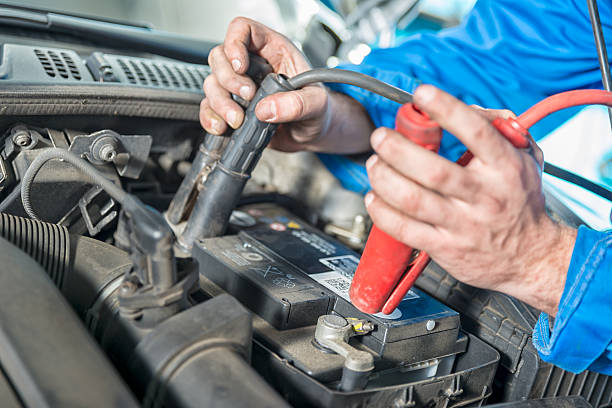In the rapidly evolving world of energy solutions, Battery Manufacturers have emerged as pivotal players in reshaping industries across the globe. From electric vehicles to renewable energy storage and portable electronics, the demand for advanced battery technologies has never been greater. As the global economy accelerates toward sustainability and electrification, battery manufacturers are not only meeting demand but also driving innovation at an unprecedented scale.
The Rise of Battery Technology: A Global Movement
The global shift toward clean energy and sustainable practices has significantly impacted the trajectory of battery technology. Governments, corporations, and consumers are increasingly prioritizing environmental considerations. As a result, the focus has shifted to efficient, long-lasting, and cost-effective batteries that can power the next generation of green technology.
Environmental Policies and Their Role
Stricter emission regulations, particularly in the automotive industry, have prompted a massive shift toward electric mobility. This trend has placed battery manufacturers at the center of the global energy transition. Nations like China, the United States, and members of the European Union are rolling out incentives for electric vehicle adoption, which further boosts demand for high-capacity, reliable battery systems.
Consumer Electronics and Smart Devices
As smartphones, wearables, and IoT devices become integral to modern life, the role of compact and efficient batteries has become more critical than ever. Battery manufacturers are now exploring solid-state batteries, silicon anodes, and other innovative materials to meet the demands of the tech-savvy generation.
Types of Batteries Dominating the Market
Different applications demand different battery chemistries, each with unique benefits and challenges. Understanding the various types helps illustrate how battery manufacturers tailor their offerings across industries.
Lithium-Ion Batteries
Currently leading the charge, lithium-ion batteries are favored for their high energy density, lightweight design, and rechargeability. Used widely in electric vehicles, smartphones, laptops, and energy storage systems, they account for the largest market share among modern battery types.
Solid-State Batteries
Solid-state batteries are considered the future of energy storage. They promise enhanced safety, longer life cycles, and increased energy density compared to traditional lithium-ion cells. Battery manufacturers are investing heavily in R&D to commercialize this game-changing technology.
Lead-Acid Batteries
Despite being one of the oldest technologies, lead-acid batteries remain relevant due to their cost-effectiveness and reliability, particularly in automotive starters, backup power, and industrial equipment.
Nickel-Metal Hydride and Nickel-Cadmium
Used in applications where durability is key, these batteries still serve roles in medical devices, power tools, and older electric vehicle models. While less prevalent, battery manufacturers continue to refine these technologies for niche markets.
Regional Hotspots: Where Innovation Thrives
Global battery production is concentrated in a few leading countries that have built robust ecosystems for R&D, manufacturing, and distribution.
China
China is currently the largest producer and consumer of batteries worldwide. With state-backed subsidies, massive production capacities, and dominant raw material control, Chinese battery manufacturers lead in both volume and innovation.
South Korea and Japan
These countries boast some of the most advanced battery manufacturers in the world. Known for high-quality lithium-ion products, firms in South Korea and Japan emphasize innovation, safety, and product life cycle.
United States
American battery manufacturers are investing in next-gen technologies and expanding domestic production to compete globally. With growing EV demand and governmental support, the U.S. is witnessing a manufacturing renaissance.
Europe
The EU’s “Green Deal” and push toward carbon neutrality by 2050 have fueled massive investments in battery gigafactories. European battery manufacturers are focusing on eco-friendly production methods and ethical sourcing.
Key Players Among Global Battery Manufacturers
The battery industry is highly competitive, with several dominant names driving the charge.
CATL (Contemporary Amperex Technology Co. Limited)
Headquartered in China, CATL is the world’s largest battery manufacturer. Known for supplying batteries to Tesla, BMW, and Volkswagen, CATL is renowned for scale, innovation, and reliability.
LG Energy Solution
A spinoff from LG Chem, LG Energy Solution is a South Korean powerhouse. Its lithium-ion batteries are used in EVs, mobile devices, and energy storage systems worldwide.
Panasonic
Panasonic’s long-standing collaboration with Tesla and commitment to high-density lithium battery production make it a vital name in the battery sector.
Samsung SDI
Samsung SDI develops advanced batteries for mobile devices, power tools, and electric vehicles. It is one of the most innovative battery manufacturers in Asia.
BYD
China-based BYD produces both batteries and electric vehicles. It’s a vertically integrated company that controls the entire battery supply chain, from raw materials to finished products.
Manly Battery
An emerging name in the battery world, Manly Battery is gaining attention for quality lithium-ion solutions and innovative design. It plays a vital role in custom battery production and serves various industries.
Challenges Battery Manufacturers Must Overcome
While growth has been exponential, battery manufacturers face several challenges that need strategic solutions.
Raw Material Supply Chain
The availability and ethical sourcing of materials like lithium, cobalt, and nickel are constant concerns. Supply chain disruptions and geopolitical tensions further complicate sourcing.
Recycling and Sustainability
Battery disposal is an environmental challenge. Manufacturers are now adopting recycling programs and circular economy principles to minimize waste and reclaim valuable materials.
Technological Limitations
Energy density, charging time, safety, and lifecycle still present technical barriers. Battery manufacturers are continuously innovating to resolve these issues without significantly raising costs.
Regulatory Hurdles
Navigating the regulatory frameworks in various countries requires compliance expertise. Standards around safety, transport, and environmental impact can vary significantly across regions.
The Electrification Boom: Opportunity for Battery Manufacturers
The world is witnessing a monumental shift toward electrification, offering massive opportunities for battery manufacturers.
Electric Vehicles
As EV adoption accelerates globally, battery manufacturers are scaling production and improving performance to meet the surging demand. Fast-charging capabilities and extended range remain critical focus areas.
Renewable Energy Storage
Solar and wind energy need efficient storage solutions to handle intermittency. Battery energy storage systems (BESS) are being adopted worldwide, especially in off-grid and microgrid applications.
Industrial and Grid Applications
Beyond vehicles and electronics, battery manufacturers are tapping into the grid storage market, uninterruptible power supply (UPS) systems, and industrial automation to expand their footprint.
Innovation and the Future of Battery Manufacturing
With billions invested in research, the future holds exciting possibilities for battery technology.
Next-Generation Materials
Silicon anodes, lithium-sulfur cells, and graphene-enhanced batteries are on the horizon. These materials could significantly boost battery performance while reducing size and weight.
AI and Smart Battery Management
Artificial intelligence is revolutionizing battery management systems (BMS). Battery manufacturers are integrating AI to predict usage patterns, extend battery life, and optimize energy flow.
Gigafactories and Automation
The rise of gigafactories is reshaping global manufacturing. Automated, AI-driven facilities allow battery manufacturers to boost production efficiency and reduce costs.
Sustainability and Circular Economy in Battery Manufacturing
Eco-conscious manufacturing is becoming non-negotiable. Battery manufacturers are under increasing pressure to reduce their carbon footprint.
Ethical Sourcing
Responsible mining practices and reduced reliance on conflict minerals are vital for industry credibility.
Recycling Infrastructure
Major players are establishing recycling centers to extract usable materials from end-of-life batteries and reintegrate them into the production process.
Green Manufacturing Practices
Innovations like water-based electrode processing and closed-loop water systems are helping battery manufacturers cut emissions and environmental impact.
Collaborations and Strategic Partnerships
Battery manufacturers are forming alliances with automotive giants, tech companies, and governments to scale and innovate.
Automaker Alliances
Tesla, BMW, Volkswagen, and others have inked multi-billion-dollar deals with battery manufacturers to ensure a stable supply chain and collaborative R&D.
Government Partnerships
Public-private partnerships are driving research, funding gigafactories, and creating battery innovation hubs, especially in Europe and North America.
Academic and Research Collaborations
Partnerships with universities and research institutions help battery manufacturers stay ahead of the curve through cutting-edge scientific breakthroughs.
The Competitive Landscape: Future Outlook
The battery market is expected to exceed $300 billion by 2032, growing at a CAGR of over 15%. Battery manufacturers that can scale efficiently, innovate consistently, and prioritize sustainability are likely to dominate this expanding market.
Market Consolidation
Larger battery manufacturers are acquiring startups and consolidating production capabilities to increase market share.
Diversification
Expanding into hybrid chemistries, power electronics, and software-based battery monitoring systems is becoming increasingly common.
Localization of Production
To avoid geopolitical risks, manufacturers are localizing production facilities closer to end markets, reducing reliance on transcontinental supply chains.
Conclusion: Battery Manufacturers at the Forefront of a New Energy Era
As we move toward a more sustainable and electrified world, battery manufacturers will remain critical architects of the future. Their ability to innovate, scale, and operate responsibly will define the pace of progress in everything from electric mobility to renewable energy. With strong demand forecasts and technological breakthroughs on the horizon, battery manufacturers are not just responding to the energy transition — they are leading it.
Their strategic role in powering the future makes them some of the most influential players in the global economy today. From massive gigafactories to nanotech research labs, the journey of battery manufacturers reflects the broader story of humanity’s push for a cleaner, smarter, and more connected world.



